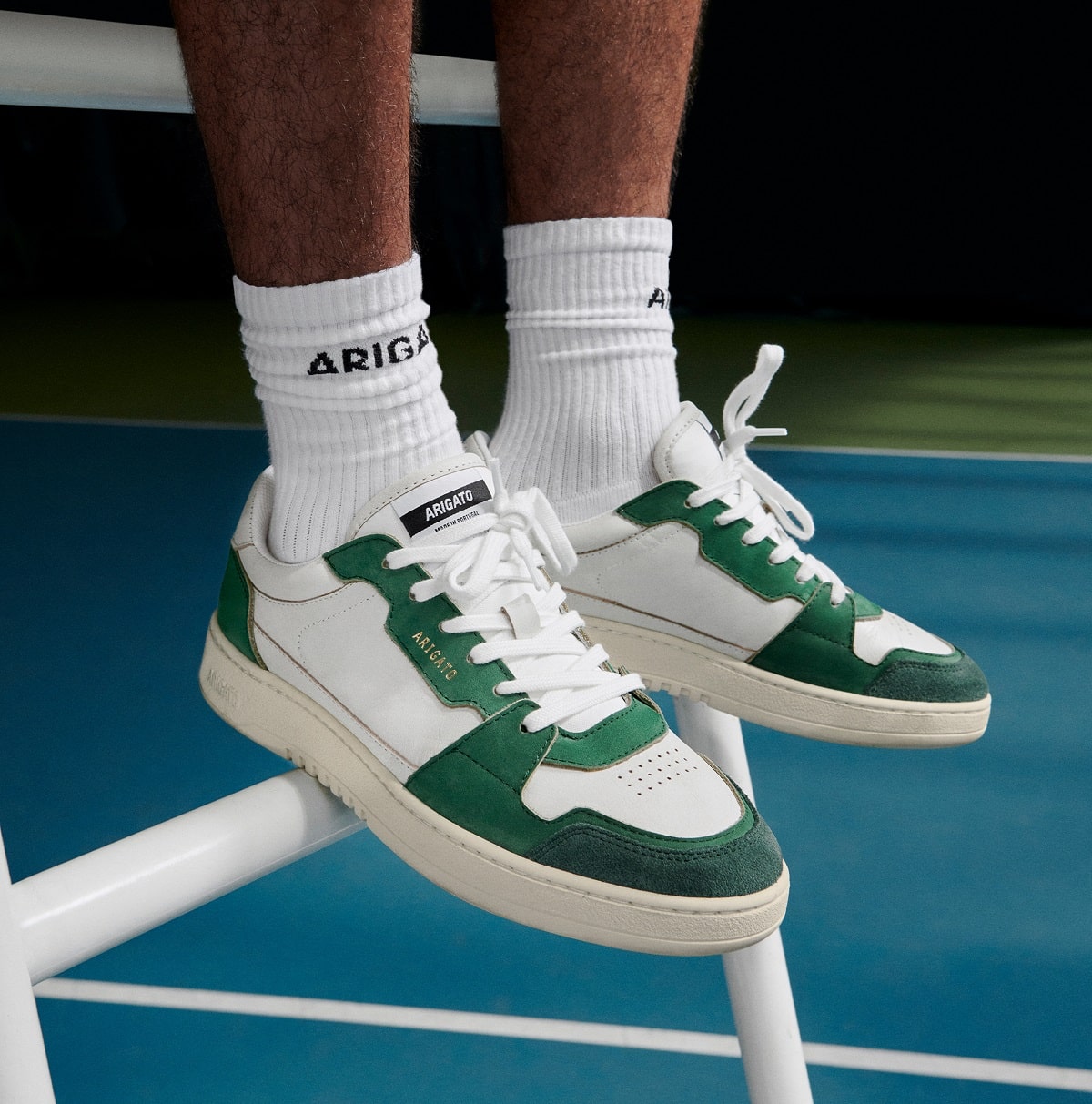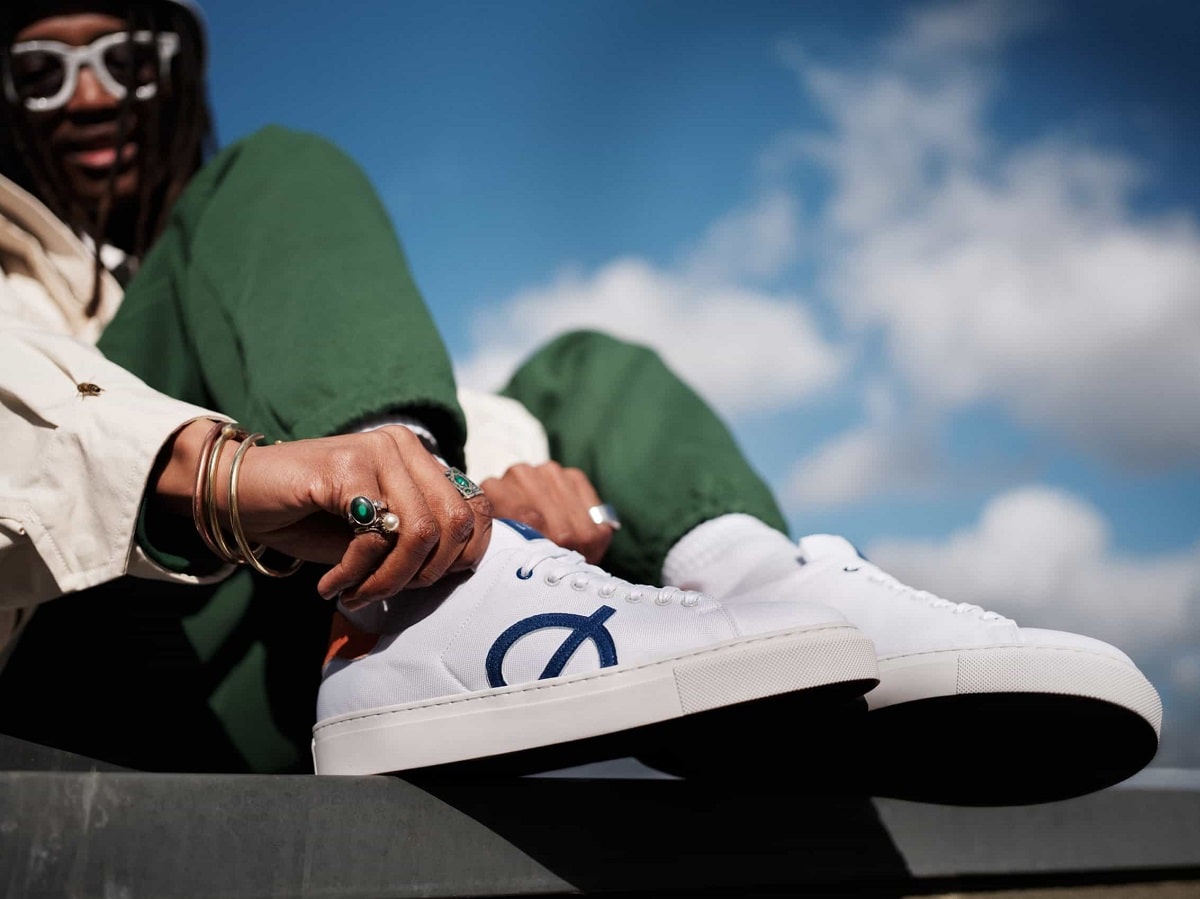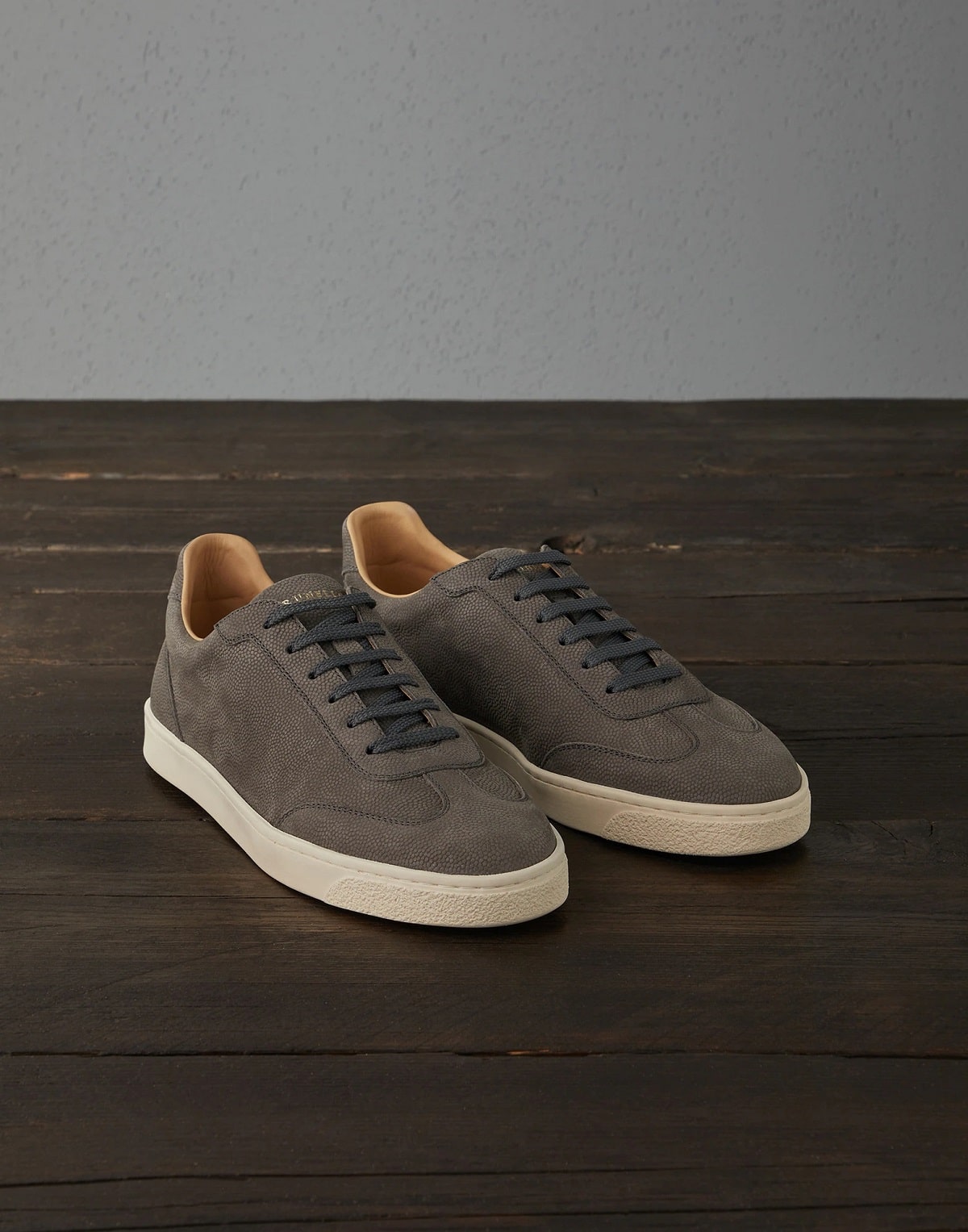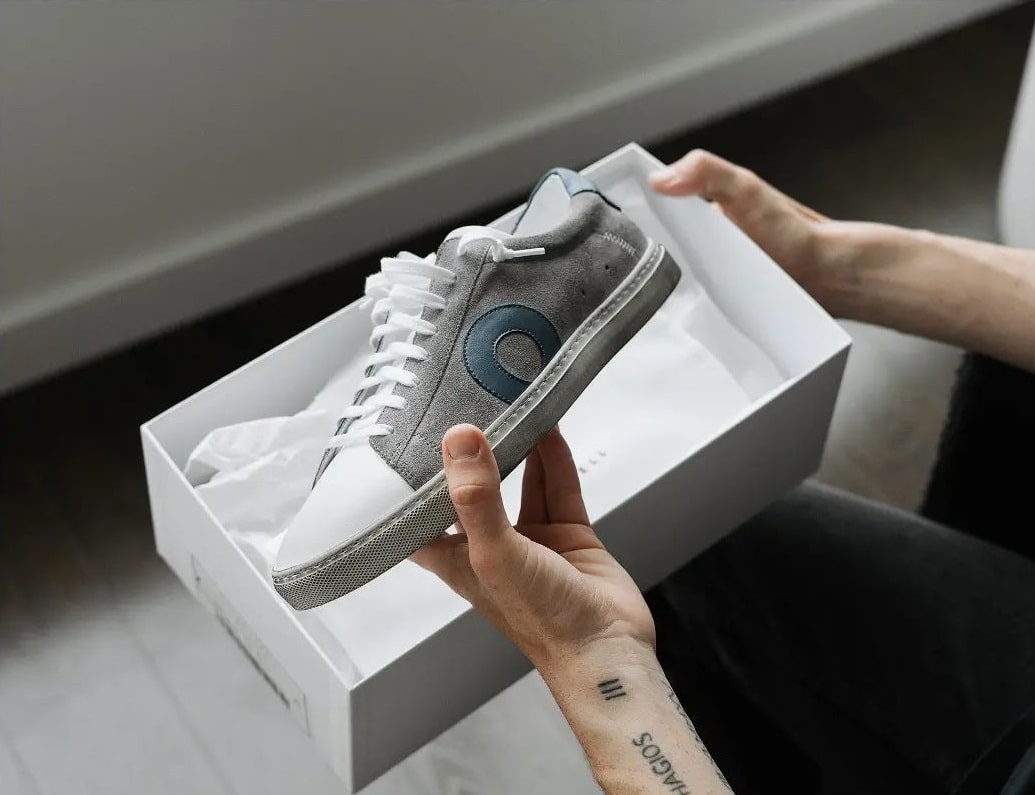1
HOME > Tips & Advice >
WHAT TO LOOK FOR IN A PAIR OF SNEAKERS
Written by Ivan Yaskey in Tips & Advice on the 10th January 2023

For decades, “sneakers” or “trainers” have described something vaguely athletic related. These could be strictly a casual shoe once used for playing a sport – think Converse high-tops – or a skate style adapted to more everyday use. To one end, you have the glossy leather-topped dress sneaker, and on the other, the more technical running shoe, trail runner, and cross-trainer. All, if you’re looking for visual similarities, start with a paneled upper composed of a mix of leather, mesh, or textile. A lace-up vamp provides a closer fit – although this isn’t always a requirement. The toe will typically have a more rounded to sloped appearance. Finally, the sole unit and treads consider movement – from traction to impact absorption. Still, considering this range, it’s easy to end up with a pair of sneakers that are insufficient for the job – for instance, attempting to run laps in Vans – or overkill – like technical features when all you need is a more comfortable fit. This disconnect can lead to orthopedic issues and potentially contribute to an injury like a rolled ankle or shin splints. As such, whether you’re solely focused on style or thinking about the gym, here’s what to look for as you shop around:
Types of Sneakers
As already mentioned, sneakers and trainers encompass a broad range of options:
Classic and Casual: Although these were once introduced for athletic pursuits, classic sneakers now function as a strictly casual style – ideal for walking and just general comfortable wear. Encompassing both high-tops and styles sitting below the ankle, these feature a leather or canvas upper, simple, non-ergonomic paneling, and a basic outsole with traction but insufficient impact absorption for the gym and more demanding activities.
Slip-on Sneakers: A type of casual shoe, this style is a more recent development and often borrows from skate shoe construction. Here, a shoe with no lace-up closure slides on for a basic degree of support and comfort. As they can easily slip off, they’re not recommended for anything more demanding than walking.

Running Shoes: While leather paneling and a more shaped design once defined running shoes, lighter, more flexible construction – every ounce counts – and greater shock absorption from the sole unit characterize more modern iterations. These are joined by strategically placed inlays for support and design that better align with the wearer’s strides. Trail runners take this template and add more toe protection, traction, and water repellency.
Walking Shoes: Not to be confused with classic sneakers, walking shoes suit moderate amounts of physical activity and tend to be ideal for the gym. While offering more body compared to running shoes, construction helps enhance the foot’s natural gait to eliminate discomfort and blisters.
Cross-Trainers: Also sometimes called an “aerobic shoe,” this is a more versatile athletic style designed for participating in multiple sports. They’re suitable for tennis, weightlifting, Cross Fit, jogging, strength training, and general gym use.
Tennis Shoes: While “tennis shoes” have been interchangeable with sneakers in the past, this more specific athletic style allows for better pivoting and side-to-side movement. As such, these offer more exterior stability than running shoes yet ensure more flexibility around the ball of the foot.
Basketball Shoes: Classic high-tops like Jordans and Dunks get grailed in the present, although their performance qualities tend to fall short. Basketball shoes traditionally feature high-top construction for more ankle support and a thicker, more textured outsole for running and pivoting on smooth, indoor court surfaces.

Features and Design
Even with these differences, you’ll want to examine the following:
Fit
We often talk about fit in reference to clothing, but footwear isn’t any different. In turn, you’re advised to start your search in person, rather than just making a guess online. In this instance, wear socks that you’d typically sport – be it every day, to the gym, or for something more demanding – and get a sense of how the shoe fits. You should be able to move your toes slightly but not feet the shoe slide around as you’re walking or running. As well, your toes shouldn’t touch the end of the toe box, and you should be able to wiggle your feet side to side and back and forth. While a loose fit should be avoided, something sitting too close or too tight can contribute to pain and blisters. In getting more activity specific, make sure your toes have about a half-inch of room. Also, check pressure points or “hot spots”: A too-close fit can result in red, raw, or abraded skin in these areas.
Materials
No single material is “right.” Instead, think about your comfort level in relation to how active you plan to be:
Mesh: Typically made from a synthetic fabric, mesh is to go-to material for running shoes. This material offers the greatest degree of breathability and flexibility, although it wears out sooner and tends to be too lightweight for everyday wear.
Canvas: This cotton material is standard for casual sneakers, offering perhaps the best of both worlds: More substance and structure than mesh and more breathability than leather.
Leather: Traditional leather provides the greatest amount of durability. Yet, this material – as well as suede and vegan versions – tends to hold onto body heat and not breathe as well.
Wool: We’re seeing this as an all-purpose material – one more sophisticated than cotton canvas and offering more breathability and natural wicking and odor-control action.

Shape
In terms of running shoes, shape tends to pertain to drop and pronation: A design that doesn’t align with your foot ultimately impedes your performance. On a more general level yet still reflecting this, the sneaker’s shape should ideally match that of your foot. You shouldn’t notice any awkwardness, rubbing, or feeling as if you’re carrying something from your soles. Here, pay attention to how wide or narrow your foot is, the shape of your toes, and if you have a curved arch requiring more support. You may need to supplement your sneakers with custom-shaped insoles for a more natural, supportive feel.
Lasting
To put it directly, this is how the shoe’s upper is attached to the sole unit. Lasting contributes to comfort and flexibility, and also significantly influences durability. Basic lasting includes:
- Slip-lasting, in which the upper is first stitched together and then glued to the outsole. This results in more flexibility.
- Board-lasting stitches the upper to a stiff base, which is then attached to the outsole.
- Combination lasting adds slip construction to the front of the shoe and board construction to the back for more support at the heel.

Performance Features and Support
Generally, these aspects go hand in hand: When your feet have more support, they’re less likely to feel fatigued, and athletically, you perform better. With sneakers, common aspects include:
Impact absorption: This midsole property helps lessen the force of impact when you land, so it’s not hitting the base of your feet directly.
Heel cup: Not to be confused with a cupsole, a heel cup adds additional support to the heel to lessen pressure placed on this area and decrease your risks for plantar fasciitis.
Arch support: Often provided through the included insole and custom orthotics, arch support adds a combination of support, cushioning, and impact protection to lessen the stress placed on your foot’s arch. Insufficient arch support not only tires your feet out sooner, but you’re more at risk for developing shin splints, Achilles tendonitis, or a flat foot.
Ankle support: For basketball shoes, as well as hiking shoes, a mid-height design places cushioning around the ankle for improved stability and support and to lessen your risks for a rolled ankle. Years ago, skate shoes tended to have this – you’ll still see it with Vans’ Sk8-Hi – but it’s less common today.

Traction
Although you may come across a pair of dress or fashion sneakers with no traction, most pairs have this feature. The question then becomes, “How much do you need?” In general, certain rubber compounds and treatments, like vulcanized rubber, offer more grip, while more defined lugs better help you handle slippery surfaces.
Durability and Wear
How frequently do you intend to wear your pair of sneakers? Will they be an all-day, everyday style, or just for going to the gym a couple of days per week? Just as with clothing, quality construction matters: Something thinner and flimsier won’t last as your everyday shoe. Once you throw activity into the equation, you flatten the midsole sooner, don’t get the support you need, and expose yourself to various injuries.

Where You’ll Be Wearing Your Sneakers
Are these strictly ambling-on-the-sidewalk shoes, or will you be pounding the pavement a few times per week? Do they need to keep you steady on more gravely surfaces, or do you just have asphalt in mind? Within this spectrum, the less stable the terrain and the more sharp edges you could encounter, look for a sneaker with sturdier construction and more toe protection. If you’re planning to take them out for the gym or to go for a run, make sure they offer enough support and impact protection. Excluding the multipurpose cross-trainer, make sure you assign specific uses to your shoes – dress, casual, and gym to start – so you don’t wear out each pair prematurely or find out you don’t have enough support.
Buying Sneakers
In addition to going in person and wearing a pair of socks:
- Try on various pairs at the end of the day, after your foot has had a chance to swell. Otherwise, you risk purchasing something too tight.
- Fully lace up all sneakers you try on, so you get a sense of how they’ll fit from your ankle to your toes.
- Move your toes and foot first, and then go for a walk in the store. You should be able to naturally move your toes without having the sneaker slide around when fully laced up. Also take note of how comfortable they feel, and if you notice rubbing or friction in certain areas.
- Don’t forget about the heel. Pay attention to any shifting, lifting, or constriction as you move.
What is more important to you when shopping for sneakers? #footwear
— Menswear Style (@MenswearStyle) January 10, 2023

Trending
2
3
4
5
6
7
8
9
10










